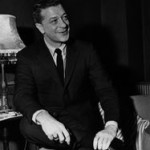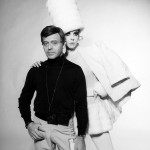by Michael Elihu Colby
(click on photos to enlarge)
Part 8: As William Faulkner Wrote at the Algonquin…
“I feel that this award was not made to me as a man, but to my work—a life’s work in the agony and sweat of the human spirit, not for glory and least of all for profit, but to create out of the materials of the human spirit something which did not exist before.
… I believe that man…is immortal, not because he alone among creatures has an inexhaustible voice, but because he has a soul, a spirit capable of compassion and sacrifice and endurance. The poet’s, the writer’s, duty is to write about these things. It is his privilege to help man endure by lifting his heart, by reminding him of the courage and honor and hope and pride and compassion and pity and sacrifice which have been the glory of his past.” 1
The above is an excerpt from the 1950 Nobel Prize acceptance speech of William Faulkner, written in his room at the Algonquin. I’ve often stood in awe of the writers who stayed at the Algonquin, trying to fathom what made them tick. Their creativity stemmed from such a spectrum of sources.
There was Gore Vidal, whom I saw at the hotel while he was working on the political play, The Best Man. Vidal developed his interests at the side of his blind grandfather, Senator Thomas Gore of Oklahoma, for whom he “was required early on to read grown-up books…mostly constitutional law and, of course, the Congressional Record.” 2
There was Eudora Welty, whom I’d befriend in years to come when I assisted on a musical version of her novella The Robber Bridegroom. Inspired by her father, an amateur photographer,3 she preceded her writer’s career behind a camera, with a remarkable exhibition of photographs evoking Mississippi during the Great Depression.4 Through her photographer’s eyes, she likewise created literary depictions of lives and loss in small-town Mississippi, including the Pulitzer Prize winning novel The Optimist’s Daughter. I especially identified with Algonquin writers who built order out of the turmoil of their past. James Thurber, with one eye blinded by a childhood accident, couldn’t participate in sports and other physical activities but compensated with an unusual wit and imagination.5 Arthur Miller, whose affluent New York family lost almost everything in the 1929 Wall Street Crash,6 infused his plays with ruminations on failure, loss, and depression. Whatever their muses or demons, these writers spun their experiences into art that (to borrow from Faulkner) “lifted’ the hearts of people everywhere.
Moreover, I witnessed plenty of drama at home, where the conflicts between my Brooklyn-born Dad and my Southern Mom sometimes played out like scenes by both Arthur Miller and Tennessee Williams. Friction was ever present at 1340 Paine Road, and loud disputes often started and ended the day. On our Sunday ride to a restaurant lunch, my parents would squabble to the extent where my mother flung open the car door, threatening to jump out. Another incident occurred when I was in my game room playing pool with a friend: we suddenly saw my Dad’s arm crashing through the glass of a window-door—he had staggered backwards in the next room during a fight with Mom. My father would retreat to his well-stocked, glass-mirrored bar. My frustrated mother would beat her fist against things, even once injuring her hand. Thank goodness the Colbys had a protective housekeeper or two to clean up.
Nevertheless, I found comforting ways to write this all off. I escaped daily commotion through my DC/Superman magazines, where goodness always saved the day. I then created little comic book stories about heroes conquering chaos—adventures I wrote and illustrated in small booklet form. When I visited the Algonquin, I showed them to Grandpa Ben, who stored them all in a drawer in his office. I haven’t a clue what happened to them except—obviously—Grandpa never sent them to any of his publisher friends. He did, however, introduce me to Algonquin regular, Jack Liebowitz, who published DC Comics and took me on a personal tour of their offices—watching artists at work—which for me even beat a trip to Disneyland. I only wish I could have shown my cartoons to James Thurber, the writer/cartoonist who lived at the hotel until his death from pneumonia in 1961. My daydreams, populated by fantastic heroes, were not unlike those of Thurber’s famous character, Walter Mitty.
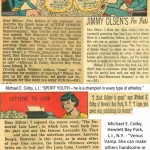

As time passed, I did become a “published writer” of sorts. I penned postcard comments printed in the “letters to the editor” pages of almost every known comic book, both in DC publications and ultimately Marvel. The contents of the postcards seem somewhat silly now, but they made me feel accomplished at the time. Across the Atlantic, a “fan” in Dublin tracked me down, sending me a gorgeous Shamrock calendar and asking to be my pen pal—discussing comic books. Unfortunately, he ceased writing when I sent the lad a card wishing him a Happy Rosh Hoshanah (Around then, I started to realize that Jews weren’t the world majority, except perhaps in Hewlett and Woodmere).
To this day, the name “Michael E. Colby” can be googled on the Internet to locate my old letters, including suggestions for new super heroes: e.g. Detector Lad, Venus Vamp, & Sport Youth. Such brainstorming foreshadowed my creating a Circus of Voices in the show Charlotte Sweet, where everyone has a special ability (high voice, low voice, fast voice, etc.), ultimately triumphing over adversity. Incidentally, Charlotte Sweet was written, auditioned, rehearsed, and had its opening night party—where else?—at the Algonquin.
There was one memorable response to my letters that I especially wish I’d saved. A girl who lived a few blocks from me, in Hewlett Harbor, got a hold of one of my unfavorable notes to Marvel Comics. Wasting no time, she wrote directly to my Hewlett address. That girl, Joan Lieber, was the daughter of the writer/president of Marvel Comics, Stan Lee. Coincidentally she’d attended Woodmere Academy for a few years. Appalled that a boy from Hewlett could criticize Spiderman, she so fiercely defended the Marvel Universe, I never again dared to send disapproval to her father’s offices.
Of course, I never braved the universe-threatening events found in comic books. But, in the Winter of 1965, the Colbys faced a real-life adversity that sent us flying—almost as fast as Superman—to the Algonquin for safety. The calamity happened during a cold, snowy evening, after a brand-new cook—on the job her first day—had prepared a sumptuous dinner. The dinner was beautifully garnished and meticulously served, course after course. Everyone was highly impressed—for the moment. That is, until we all went to bed. Our new cook, before taking a shower, turned up the electric heater right near her bedroom curtains. Soon, it wasn’t just dinner she had cooking. Between her hysterics (“Lord, what have I done!”) and my mother’s Southern screams (“Hay-elp!”), the scene felt like a surrealistic melodrama. My father sustained minor injuries trying to put out the flame, while I phoned the fire department. Then our family and new cook fled to a neighbor’s house—some of us tramping barefoot through the snow like the little matchgirl.
Still, there was a silver lining to this storm. The damage would require us to live at the Algonquin while repairs took place at home. As tired and shaken as I was, my mind was secretly exclaiming “Hooray! Hooray! Algonquin, we’re on our way!” By 6 PM, the Colbys arrived at the hotel to live for the next month, minus our poor new cook—whose conflagration led to her professional firing.
My brother Douglas and I would travel each weekday between the Algonquin Hotel and Woodmere Academy—mostly via train. No matter how humdrum a day, I looked forward to returning to the glamorous hotel at night. By day, I was a student receiving an excellent education at Woodmere Academy. By night, I was the Algonquin Kid again.
Every evening, or so it seemed, my grandparents would introduce me to some new notable. Producer and TV host David Susskind (a friend of my grandparents), frequented the hotel to tout his new musical, Kelly. The man was a giant in the field of television, but not so much in theatre. He didn’t visit as often once Kelly opened and closed in the same evening. The unanimous pans for this show—about a man who jumps off the Brooklyn Bridge—might have tempted its investors to do the same.
Still, the Algonquin parade—unlike Kelly—never halted. While dining with my grandparents in the Rose Room, I sat near actors who one day would display both an Oscar and Tony Award on their mantels. Christopher Plummer was often around, as was Maureen Stapleton and Helen Hayes. Reputedly, the Algonquin was where Hayes first met her future husband Charles McArthur (whose playwriting credits included Twentieth Century and The Front Page). Spotting her across the Blue Bar, he tentatively approached her, scooped up a bunch of peanuts, and declared “I wish these were emeralds.” Years later, on their 25th anniversary, he gifted her with a bunch of emeralds, declaring “I wish these were peanuts.” 7
What’s more, this was a period where a diverse wave of 60s cultural figures made a splash at the hotel. Andy Warhol, the pop art icon, could often be spotted in the lobby or Rose Room. As a 14-year old, I didn’t quite know who he was—he looked to me like an actor from The Twilight Zone.
Joan Baez, the activist and folk music legend, was the Algonquin’s visiting visionary. In her career, she marched alongside Martin Luther King Jr. in the civil rights movement, toured with Bob Dylan, inspired Vaclav Havel in his fight for a Czech Republic, and organized opposition to the war in Southeast Asia.8 Yet, she seemed the most laid-back of ladies when Grandma Mary introduced her, an impressive figure with her flowing raven hair and earth mother outfits.
Another example of cultural cool was fashion designer Rudi Gernreich, one of several fashion trailblazers—such as Mary Quant and Donald Brooks—who visited the Algonquin. Gernreich treated my grandparents like family (or, as they say in Yiddish, mishpocher). As a Jewish teen in Austria, Gernreich fled with his mother to the United States when Hitler invaded his country. Every time I met him, he seemed the quintessence of the “mod 60s” look, a truly chic version whom Austin Powers would have traded his mojo to match. A crusader for gay rights as well, his iconoclastic fashions were, in many ways, his retaliation to a Fuhrer who banned nudity in art and homosexuality in Germany.9 Gernreich created unisex designs, the “bra-less bra” (a soft nylon bra with no padding), see-through blouses, mini dresses and the topless bathing suit. 10 Grandma Mary would sometimes buy fashions from designer guests—for herself, her daughters, and her sisters. But with Rudy, she stopped at his handbags.
Meanwhile, back at Woodmere Academy, something unusual happened to me. I was FIRST to be chosen on a team, not last. It wasn’t in gym but in English class, where our project was to create an epic poem in iambic pentameter. We’d studied Coleridge’s “The Rime of the Ancient Mariner” and now it was our turn to divide into teams of two, tapping into our inner Shakespeare. Regardless of weaknesses in other school activities, I’d always been facile at any project involving poetry and rhyme. I suppose listening to all those show albums and Gilbert & Sullivan had paid off. Everyone wanted to be on my “iambic pentameter” team. I don’t remember exactly whom I chose, but our resulting epic—about the bravery of men in space during this 60s space race—was wonderfully received. It earned the highest grade in the class. I’d hardly achieved anything like the writers I’d met at the hotel. I was hardly any kind of super hero. But at least the Algonquin Kid was having an all around good time—for the moment.
Next part: The British Are Staying!
1 Faulkner, William. “Interviews: Gore Vidal, The Arts of Fiction No. 50”, Interviewed by Gerald Clarke. The Paris Review, No. 59. Paris, France. Fall 1974.
2 Vidal, Gore. Nobel Lectures, Literature 1901-1967, Editor Horst Frenz, Elsevier Publishing Company, Amsterdam, 1969
3 Marrs, Suzanne. Eudora Welty: A Biography. Orlando, FL: Harcourt Books. 2005.
4 Frail, T.A. “Eudora Welty as Photographer” in Smithsonian magazine, Arts & Culture section. April 2009.
5 “Biography: James Thurber.” Thurber House: http://thurberhouse.org/james-thurber.html. Columbus, OH, 2014.
6 “Arthur Miller Biography.” Bio. TRUE STORY: http://www.biography.com/people/arthur-miller-9408335? © 2014 A+E Networks.
7 Doolittle, Leslie (attributing story to Joely Fisher). “Playboy Helps Faye Resnick Find Joy” in Orlando Sentinel, Orlando, FL. February 5, 1997.
8 Levy, Arthur. Biography: Joan Baez @ www.joanbaez.com/officialbio08.html. July 2008.
9 Bay, Cody. “The Story Behind the Styles” from On This Day In Fashion: http://onthisdayinfashion.com/?tag=history-of-the-bathing-suit&paged=2. June 16, 2010.
10 Nauta, Antoinette Gerarda. “Rudi Gernreich, Misunderstood Fashion Profit” in A.G. Nauta Couture. http://agnautacouture.com/2012/11/25/rudi-gernreich-misunderstood-fashion-prophet/. November 25, 2012
*No copyright Infringement Intended. For Entertainment Purposes Only.
Click Below for Parts 1 thru 7:
https://www.theaterpizzazz.com/algonquin-kid-part-way-back/
https://www.theaterpizzazz.com/algonquin-kid-part-2-algonquin-renaissance/
https://www.theaterpizzazz.com/algonquin-kid-part-3-series/
https://www.theaterpizzazz.com/algonquin-kid-part-4-series/
https://www.theaterpizzazz.com/algonquin-kid-part-5-series/
https://www.theaterpizzazz.com/algonquin-kid-part-6-series/
https://www.theaterpizzazz.com/algonquin-kid-part-7-mazel-tov-robert-f-kennedy/


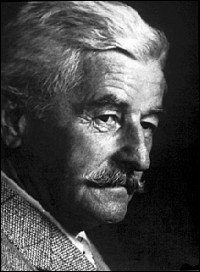

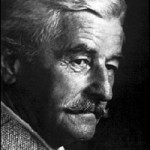
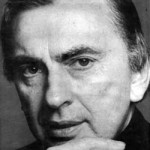
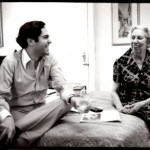

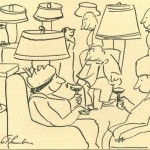
!["Circus of Voice" (CHARLOTTE SWEET) Photo: Liz Wolynski]](https://www.theaterpizzazz.com/wp-content/uploads/2014/01/get-attachment.aspx_15-150x150.jpeg)
